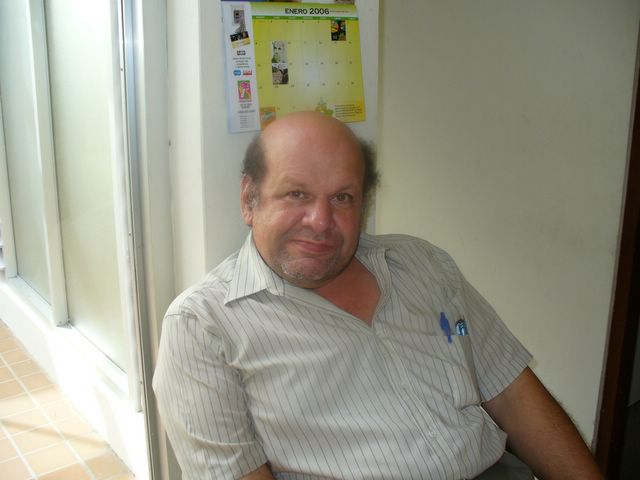Some may ask why my homage to Cuba and a full HALF-CENTURY of Revolution has appeared first in my English language blog. It's because this Caribbean island country can show other more prosperous places how to work historic preservation as an integral part of an ongoing social project in which land uses are planned on basis of social needs (though I recognize that the money shortage and the American blockade have hamstrung Cuba's capacity to respond to the needs of its people).
When exactly fifty years ago to this day Fidel Castro proclaimed victory over the venal dictator Batista and a few days later rode triumphant into Havana's boulevards, Cuba was to witness a real sea change in its social order. An agricultural nation barely eking its way by selling underpriced sugar to Western hemisphere nations became in time a more diversified economy with import-substitution industries and a vast improvement in the quality of life of the famished peasants. The tentacles of Mob investment in the hotel and casino business were severed: Cuba was no longer to be a playground for Mafiosi and their beneficiaries. (This in my belief is why the USA's blockade and boycott of relationships with the Castro government has been so tenacious.)
Cuban cities were impoverished backwaters except for Havana, which was beginning to flood with vulgar, glitzy buildings for tourism. (Not all, though: for example, Max Borges's Tropicana club is a veritable masterpiece of poetry in reinforced concrete.) The Cuban capital was beginning to see high rise towers among the traditional scale of 2- to 5-story brick buildings built cheek-to-jowl creating an unique, dense and interesting ensemble in the Old Havana and Havana Central quarters, seat of most 19th century and older buildings.
Although scarce resources were allocated in priority to ameliorating the lot of the peasants and cane workers, who were in time introduced to previously unheard-of luxuries like running water and electricity, preservation of old Cuban cities was from the beginning of the Revolution an irreductible part of the nation's cultural policy. Little information was then available: Joaquín Weiss, an architect, had written a multivolume book on Cuban Spanish Colonial buildings, but other facts were still buried in musty archives, interred away from the gaze of historians and preservationists.
By the mid sixties, general censi had been made of Old Havana and the eastern city of Santiago, Cuba's second most important conurbation. Between the mid sixties and mid eighties a full preservation team would be implemented covering not only these two cities but also a host of other smaller cities and towns, and even rural areas like the Viñales Cultural Landscape, related to tobacco, in the western Pinar del Río province. Those two decades saw an exponential increase in interest in preserving Cuban heritage and hundreds of systematic inventories were performed all over the island. The harvest of all this process has been phenomenal: FOUR World Heritage urban areas (Havana in 1982 was the first one; also Trinidad, Cienfuegos and the most recent one, Camagüey), two cultural landscapes (Viñales, and the first coffee cultural landscape in the Caribbean in the eastern mountains) and the San Pedro fort in Santiago.
Add to all this several dozen protected historic towns and thousands of other buildings over all of Cuba's geography and it's not hard to see that the country needed a specialized center for education, outreach and technical assistance. In 1980 the Cencrem (Spanish acronym for National Conservation, Preservation and Museology Center) was established in the former Santa Clara convent in Old Havana's heart. It now educates Cuban and foreign preservation professionals, and in its studios research and practice is done in benefit of local preservation agencies from the Havana City Historian's office (Old Havana's overseers) to rural archaeological studies in need of investigations over materials conservation.
The deterioration seen in many historic Cuban buildings is a veritable problem; but giant steps have been taken to mitigate its impact. Cuban preservationists are among the most knowledgeable in stabilization and mitigation techniques for old places "over the top", and their skills have been exported by way of technical assistance overseas and frequent workshops and symposia. Thus the Cuban preservation scene is possibly one of the most dynamic in Latin America, equaled maybe only by that of Mexico - a far larger and more populated country. Summing up this introduction, the Cuban Revolution, a solid half-century old today, has been also a revolution of memory and history in the service of the common good. They are the example to follow!
Thursday, January 01, 2009
Subscribe to:
Post Comments (Atom)

1 comment:
"It's because this Caribbean island country can show other more prosperous places how to work historic preservation as an integral part of an ongoing social project in which land uses are planned on basis of social needs"
What would it take to bring that to an Island like PR?
Post a Comment